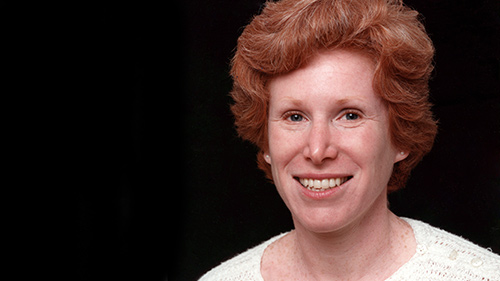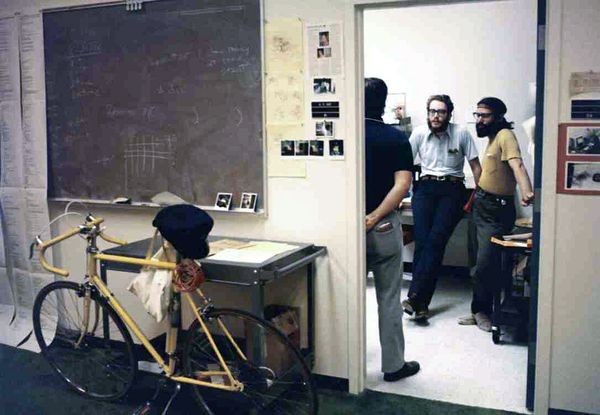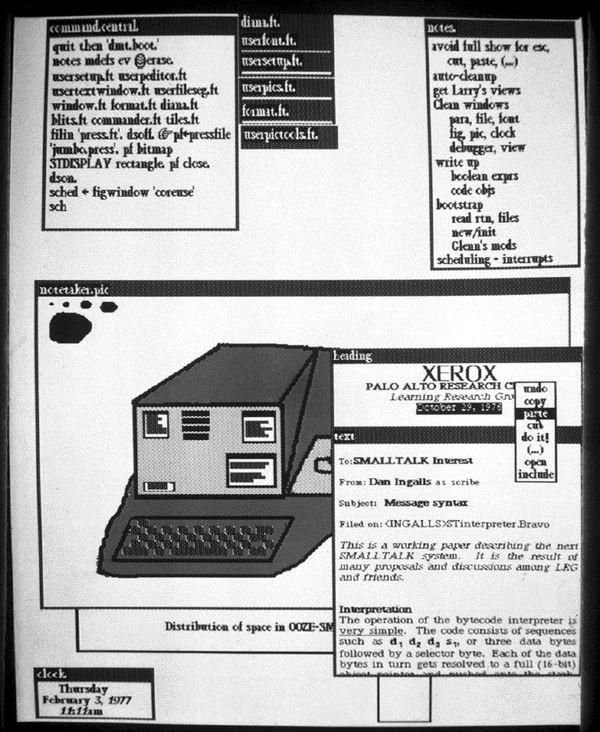Xerox PARC
The PARC Computer Science Laboratory (CSL)
Lab Director Bob Taylor held periodic informal meetings in this “beanbag” conference room where CSL staff presented new ideas. Members received frank and sometimes brutal feedback from their colleagues.
Left to right: Jim Mitchell, Ed Fiala, Terry Roberts, Vicki Parish, Wesley Clark, and Ed Taft.
Xerox PARC
Eager to be known as more than a supplier of office copiers, Xerox created the Palo Alto Research Center (PARC) in 1970. PARC’s modest assignment? Create “the Office of the Future.”
George Pake assembled world-class scientists and engineers—“Architects of Information”—into a hothouse of innovation that flourished for decades. PARC developed laser printing, graphical user interfaces, Ethernet, digital video, word processing, multi-beam solid-state lasers, very large scale integrated circuits (VLSI), and more.
Although many PARC ideas never became successful commercial products, some generated billions of dollars in sales for Xerox.
"The best way to predict the future is to invent it."
Xerox PARC
The atmosphere at Xerox PARC reflected the West Coast hippie-influenced culture of the 1970s. It was worlds apart from Xerox corporate headquarters in Connecticut.
View Artifact DetailThe Apple Connection
In 1979, Xerox bought a small stake in Apple. Xerox got a stock certificate. Apple got access to Xerox technology.
Apple engineers, and CEO Steve Jobs, visited Xerox PARC in December 1979 to see the Alto’s graphical interface and look “under the hood.” That visit reinforced similar work already underway at Apple for its Lisa and Macintosh.
Adele Goldberg at Xerox PARC
Initially, Goldberg refused to give Steve Jobs and his engineers a Smalltalk demonstration, suspecting that Apple would appropriate the technology. Xerox management overruled her. Jobs later said, “it was obvious to me that all computers would work like this some day.”
View Artifact DetailDorado Smalltalk screen
Dorado was a higher-performance successor to the Alto. It supported all three Alto programming environments: Smalltalk, Cedar/Mesa, and Interlisp. This “personal computer” had the same 60 nanosecond cycle time as IBM’s 360/91 supercomputer only 11 years earlier!
View Artifact DetailApple Lisa 2 screenshot
Although much influenced by the work at Xerox PARC, Apple engineers developed their Lisa computer’s similar graphical user interface from scratch. The commercial failure of the Lisa was a result of its high price and poor performance, not its features.
View Artifact Detail




